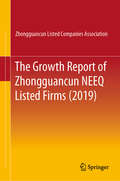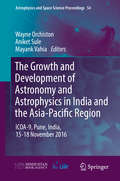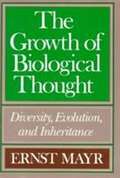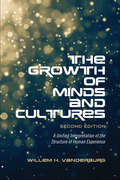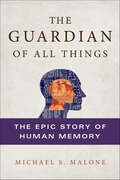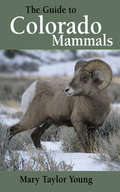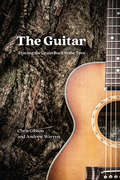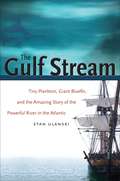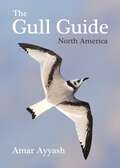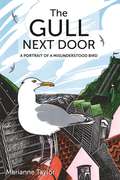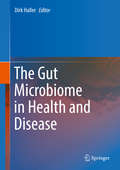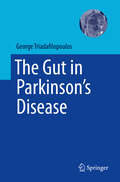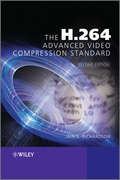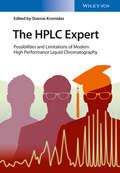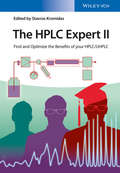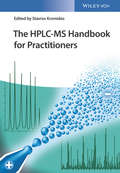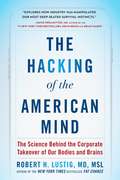- Table View
- List View
The Growth Report of Zhongguancun NEEQ Listed Firms (2019)
by Zhongguancun Listed Companies Assoc.This book focuses on the analysis of financial data and innovative results of Chinese Zhongguancun (Z-park) NEEQ Listed Firms, and objectively evaluates the growth ability of them. The book displays the overall scale, growth capacity, industry distribution, social contribution, and comparison with other regions of NEEQ Listed Firms in Zhongguancun from multiple dimensions, aiming at objectively presenting the growth characteristics and development status of them. For global investors, economic researchers, or financial analysts, this book will be an important way to understand China's scientific and technological innovation achievements and Zhongguancun’s outstanding enterprises.
The Growth and Development of Astronomy and Astrophysics in India and the Asia-Pacific Region: ICOA-9, Pune, India, 15-18 November 2016 (Astrophysics and Space Science Proceedings #54)
by Wayne Orchiston Aniket Sule Mayank VahiaThis book discusses the study of astronomy in different cultures, applied historical astronomy and history of multi-wavelength astronomy, and the genesis of recent research. It contains peer-reviewed papers gathered from the International Conference on Oriental Astronomy 9 (ICOA-9) held at the Indian Institute of Science Education and Research Pune, India. It covers the areas like megalithic and other prehistoric astronomy, astronomical records in ancient texts, astronomical myths and architecture, astronomical themes in numismatics and rock art, ancient astronomers and their instruments, star maps and star catalogues, historical records and observations of astronomical events, calendars, calendrical science and chronology, the relation between astronomy and mathematics, and maritime astronomy. This book will be a valuable complement to a future generation of students and researchers who develop an interest in the field of Asian and circum-Pacific history of astronomy.
The Growth of Biological Thought: Diversity, Evolution, and Inheritance
by Ernst MayrNo one in this century can speak with greater authority on the progress of ideas in biology than Ernst Mayr. And no book has ever established the life sciences so firmly in the mainstream of Western intellectual history as The Growth of Biological Thought. Ten years in preparation, this is a work of epic proportions, tracing the development of the major problems of biology from the earliest attempts to find order in the diversity of life to modern research into the mechanisms of gene transmission.
The Growth of Minds and Culture: A Unified Interpretation of the Structure of Human Experience
by Willem H. VanderburgThe impact of science and technology on culture raises a number of questions about the ways in which people relate to each other and to their environment. Such questions cannot be answered by traditional approaches. Thus another level of analysis is needed to complement the traditional approaches and to address future challenges. The first step in creating this new analysis was taken by Willem H. Vanderburg in 1985 with his pioneering work The Growth of Minds and Cultures. In this book, the first of a multi-volume series that includes Our Battle for the Human Spirit (2016), Vanderburg shows how the culture of a society underlies its science, technology, economy, social structure, political institutions, morality, religion, and art. As such, he seeks to build bridges not only between the ‘two cultures’ but between all the sciences in order to gain a deeper understanding of our age. This expanded second edition makes the author’s ground-breaking analysis available to a generation of digital natives.
The Growth of the Mind: And the Endangered Origins of Intelligence
by Stanley I. GreenspanA short description of how the mind works and how intelligence can be defined.
The Grub Street Dictionary of International Aircraft Nicknames, Variants and Colloquial Terms
by John HortonA dictionary which provides the international aircraft nicknames, colloquial terms, etc...
The Guardian of All Things: The Epic Story of Human Memory
by Michael S. MaloneA fascinating exploration of the history of memory and human civilizationMemory makes us human. No other animal carries in its brain so many memories of such complexity nor so regularly revisits those memories for happiness, safety, and the accomplishment of complex tasks. Human civilization continues because we are able to pass along memories from one person to another, from one generation to the next. The Guardian of All Things is a sweeping scientific history that takes us on a 10,000-year-old journey replete with incredible ideas, inventions, and transformations. From cave drawings to oral histories to libraries to the internet, The Guardian of All Things is the history of how humans have relentlessly pursued new ways to preserve and manage memory, both within the human brain and as a series of inventions external to it. Michael S. Malone looks at the story of memory, both human and mechanical, and the historic turning points in that story that have not only changed our relationship to memory, but have also changed our human fabric. Full of anecdotes, history, and advances of civilization and technology, The Guardian of All Things is a lively, epic journey along a trajectory of history no other book has ever described, one that will appeal to the curious as well as the specialist.
The Guests of Ants: How Myrmecophiles Interact with Their Hosts
by Bert Hölldobler Christina L. KwapichA fascinating examination of socially parasitic invaders, from butterflies to bacteria, that survive and thrive by exploiting the communication systems of ant colonies. Down below, on sidewalks, in fallen leaves, and across the forest floor, a covert invasion is taking place. Ant colonies, revered and studied for their complex collective behaviors, are being infiltrated by tiny organisms called myrmecophiles. Using incredibly sophisticated tactics, various species of butterflies, beetles, crickets, spiders, fungi, and bacteria insert themselves into ant colonies and decode the colonies’ communication system. Once able to “speak the language,” these outsiders can masquerade as ants. Suddenly colony members can no longer distinguish friend from foe. Pulitzer Prize–winning author and biologist Bert Hölldobler and behavioral ecologist Christina L. Kwapich explore this remarkable phenomenon, showing how myrmecophiles manage their feat of code-breaking and go on to exploit colony resources. Some myrmecophiles slip themselves into their hosts’ food sharing system, stealing liquid nutrition normally exchanged between ant nestmates. Other intruders use specialized organs and glandular secretions to entice ants or calm their aggression. Guiding readers through key experiments and observations, Hölldobler and Kwapich reveal a universe of behavioral mechanisms by which myrmecophiles turn ants into unwilling servants. As The Guests of Ants makes clear, symbiosis in ant societies can sometimes be mutualistic, but, in most cases, these foreign intruders exhibit amazingly diverse modes of parasitism. Like other unwelcome guests, many of these myrmecophiles both disrupt and depend on their host, making for an uneasy coexistence that nonetheless plays an important role in the balance of nature.
The Guide to Colorado Mammals
by Mary Taylor YoungMary Taylor Young's latest field guide will help you discover and learn more about Colorado's native mammals. Covering 128 species, this guide explores mammals through detailed descriptions, full-color photographs, and informative sidebars. Also includes range maps, species' descriptions, a checklist, and a glossary. Outdoor enthusiasts and armchair naturalists will be delighted with this guide.Award-winning nature writer Mary Taylor Young's love of wild things led to a degree in zoology and a life devoted to nature and the environment. She has written nine books, including The Guide to Colorado Reptiles and Amphibians. Taylor Young lives in Castle Rock, Colorado.
The Guinea Pig Model: An Alternative Method for Vaccine Potency Testing (Pocket Guides to Biomedical Sciences)
by Viviana ParreñoThis book summarizes the development and statistical validation of a guinea pig model as an alternative for potency testing of the viral antigens included in combined vaccines applied in cattle to control the respiratory, reproductive, and neonatal calf diarrhea syndromes. The model allows, in one serum sample, to test the vaccine quality for all the viral antigens included in aqueous as well as in oil-adjuvanted formulations of bovine vaccines. The methodology proposed for the control of bovine herpes virus, parainfluenza, and rotavirus were recommended by CAMEVET as guidelines for the 30 countries in the forum, including the US.Key Features Reviews combined vaccines used for cattle Summarizes animal models used for vaccine testing Focuses on bovine herpesviruses, rotaviruses, parainfluenza, and bovine viral diarrhea virus Provides guidance on the effectiveness of the Guinea Pig model for testing vaccine immunogenicity
The Guitar: Tracing the Grain Back to the Tree
by Chris Gibson Andrew WarrenGuitars inspire cult-like devotion: an aficionado can tell you precisely when and where their favorite instrument was made, the wood it is made from, and that wood’s unique effect on the instrument’s sound. In The Guitar, Chris Gibson and Andrew Warren follow that fascination around the globe as they trace guitars all the way back to the tree. The authors take us to guitar factories, port cities, log booms, remote sawmills, Indigenous lands, and distant rainforests, on a quest for behind-the-scenes stories and insights into how guitars are made, where the much-cherished guitar timbers ultimately come from, and the people and skills that craft those timbers along the way. Gibson and Warren interview hundreds of people to give us a first-hand account of the ins and outs of production methods, timber milling, and forest custodianship in diverse corners of the world, including the Pacific Northwest, Madagascar, Spain, Brazil, Germany, Japan, China, Hawaii, and Australia. They unlock surprising insights into longer arcs of world history: on the human exploitation of nature, colonialism, industrial capitalism, cultural tensions, and seismic upheavals. But the authors also strike a hopeful note, offering a parable of wider resonance—of the incredible but underappreciated skill and care that goes into growing forests and felling trees, milling timber, and making enchanting musical instruments, set against the human tendency to reform our use (and abuse) of natural resources only when it may be too late. The Guitar promises to resonate with anyone who has ever fallen in love with a guitar.
The Guitar: Tracing the Grain Back to the Tree
by Chris Gibson Andrew WarrenGuitars inspire cult-like devotion: an aficionado can tell you precisely when and where their favorite instrument was made, the wood it is made from, and that wood’s unique effect on the instrument’s sound. In The Guitar, Chris Gibson and Andrew Warren follow that fascination around the globe as they trace guitars all the way back to the tree. The authors take us to guitar factories, port cities, log booms, remote sawmills, Indigenous lands, and distant rainforests, on a quest for behind-the-scenes stories and insights into how guitars are made, where the much-cherished guitar timbers ultimately come from, and the people and skills that craft those timbers along the way. Gibson and Warren interview hundreds of people to give us a first-hand account of the ins and outs of production methods, timber milling, and forest custodianship in diverse corners of the world, including the Pacific Northwest, Madagascar, Spain, Brazil, Germany, Japan, China, Hawaii, and Australia. They unlock surprising insights into longer arcs of world history: on the human exploitation of nature, colonialism, industrial capitalism, cultural tensions, and seismic upheavals. But the authors also strike a hopeful note, offering a parable of wider resonance—of the incredible but underappreciated skill and care that goes into growing forests and felling trees, milling timber, and making enchanting musical instruments, set against the human tendency to reform our use (and abuse) of natural resources only when it may be too late. The Guitar promises to resonate with anyone who has ever fallen in love with a guitar.
The Guitar: Tracing the Grain Back to the Tree
by Chris Gibson Andrew WarrenGuitars inspire cult-like devotion: an aficionado can tell you precisely when and where their favorite instrument was made, the wood it is made from, and that wood’s unique effect on the instrument’s sound. In The Guitar, Chris Gibson and Andrew Warren follow that fascination around the globe as they trace guitars all the way back to the tree. The authors take us to guitar factories, port cities, log booms, remote sawmills, Indigenous lands, and distant rainforests, on a quest for behind-the-scenes stories and insights into how guitars are made, where the much-cherished guitar timbers ultimately come from, and the people and skills that craft those timbers along the way. Gibson and Warren interview hundreds of people to give us a first-hand account of the ins and outs of production methods, timber milling, and forest custodianship in diverse corners of the world, including the Pacific Northwest, Madagascar, Spain, Brazil, Germany, Japan, China, Hawaii, and Australia. They unlock surprising insights into longer arcs of world history: on the human exploitation of nature, colonialism, industrial capitalism, cultural tensions, and seismic upheavals. But the authors also strike a hopeful note, offering a parable of wider resonance—of the incredible but underappreciated skill and care that goes into growing forests and felling trees, milling timber, and making enchanting musical instruments, set against the human tendency to reform our use (and abuse) of natural resources only when it may be too late. The Guitar promises to resonate with anyone who has ever fallen in love with a guitar.
The Gulf Stream
by Stan UlanskiCoursing through the Atlantic Ocean is a powerful current with a force 300 times that of the mighty Amazon. Ulanski explores the fascinating science and history of this sea highway known as the Gulf Stream, a watery wilderness that stretches from the Caribbean to the North Atlantic. Spanning both distance and time, Ulanski's investigation reveals how the Gulf Stream affects and is affected by every living thing that encounters it--from tiny planktonic organisms to giant bluefin tuna, from ancient mariners to big-game anglers. He examines the scientific discovery of ocean circulation, the role of ocean currents in the settlement of the New World, and the biological life teeming in the stream.
The Gull Guide: North America
by Amar AyyashThe definitive photographic guide to North American gullsGull identification can be challenging for even the most seasoned birder. While these birds are common to coasts, lakes, and rivers, they exhibit remarkable plumage changes related to age, which is sometimes complicated by similarities between species and a readiness to hybridize. This book provides an invaluable identification guide to all regularly occurring gull species and subspecies throughout North America. It is packed with the very latest research on field identification, updated taxonomy, current distribution trends, color maps, and helpful notes on natural history, aging, and molt. The Gull Guide integrates the essential elements that are critical to understanding gulls, setting an entirely new standard for identifying and enjoying these marvelous birds.Features more than 1,800 superb color photosCovers 36 gull species as well as 7 of the most commonly encountered hybrid gullsGives equal attention to rarities from Asia, Europe, and South AmericaDescribes the key characteristics of all age groups, from juvenile through adult plumagesInnovative photo collages give side-by-side comparisons, enabling readers to distinguish between similar species and avoid common pitfalls associated with gull identificationComes with a one-of-a-kind &“cheat sheet&” describing key features of select Larus speciesA must for the bookshelf of every birder and ornithologist
The Gull Next Door: A Portrait of a Misunderstood Bird (Wild Nature Press)
by Marianne TaylorA uniquely personal meditation on Britain's gulls by one of today's leading wildlife writersFrom a distance, gulls are beautiful symbols of freedom over the oceanic wilderness. Up close, however, they can be loud, aggressive and even violent. Yet gulls fascinate birdwatchers, and seafarers regard them with respect and affection. The Gull Next Door explores the natural history of gulls and their complicated relationship with humans.Marianne Taylor grew up in an English seaside town where gulls are ever present. Today, she is a passionate advocate for these underappreciated birds. In this book, Taylor looks at the different gull species and sheds light on all aspects of the lives of gulls—how they find food, raise families, socialize and migrate across sea, coastland and countryside. She discusses the herring gull, Britain's best-known and most persecuted gull species, whose numbers are declining at an alarming rate. She looks at gulls in legend, fiction and popular culture, and explains what we can do to protect gull populations around the world.The Gull Next Door reveals deeper truths about these remarkable birds. They are thinkers and innovators, devoted partners and parents. They lead long lives and often indulge their powerful drive to explore and travel. But for all these natural gifts, many gull species are struggling to survive in the wild places they naturally inhabit, which is why they are now exploiting the opportunities of human habitats. This book shows how we might live more harmoniously with these majestic yet misunderstood birds.
The Gut Microbiome in Health and Disease
by Dirk HallerThe book provides an overview on how the gut microbiome contributes to human health. The readers will get profound knowledge on the connection between intestinal microbiota and immune defense systems. The tools of choice to study the ecology of these highly-specialized microorganism communities such as high-throughput sequencing and metagenomic mining will be presented. In addition the most common diseases associated to the composition of the gut flora are discussed in detail. The book will address researchers, clinicians and advanced students working in biomedicine, microbiology and immunology.
The Gut in Parkinson's Disease
by George TriadafilopoulosAt present, there is minimal and misleading knowledge of gastrointestinal dysfunction in Parkinson's disease among primary neurologists and gastroenterologists. This book reviews our current understanding of the GI involvement in PD, as many experiments suggest that the gut might be the site where the disease starts. Also discussed is how the gut dysfunction causes symptoms from the top (mouth) to the bottom (anal canal), and because of their frequency and severity, they contribute to disease progression and disability. In addition, the book covers the negative effects of small intestinal bacterial overgrowth (SIBO) and of a frequently silent stomach infection by Helicobacter pylori infection on the absorption of antiparkinsonian drugs, in turn causing motor fluctuations and inadequate treatment response. The Gut in Parkinson's Disease serves as a bridge between patients, their movement disorders specialists, and other health care providers who currently provide compartmentalized and at times conflicting care for such needy patients. The book distills the clinical and research experience of the author, who -as a Clinical Professor of Medicine (Gastroenterology) at Stanford University School of Medicine over the past 20 years- managed hundreds of patients with Parkinson’s Disease suffering from gut manifestations.
The Gut-Brain Paradox: Improve Your Mood, Clear Brain Fog, and Reverse Disease by Healing Your Microbiome (The Plant Paradox #9)
by Dr. Steven R Gundry, MDDr. Steven R. Gundry, the New York Times bestselling author of the groundbreaking Plant Paradox series, shares compelling evidence that our gut microbiome is driving our thoughts, feelings, behaviors, and our mental, emotional, and neuronal health—and shows us how to heal our microbiomes to take back control of our minds.In his previous bestselling books, Steven R. Gundry taught readers how to reverse disease and improve health and well-being by preventing and repairing leaky gut. In The Gut-Brain Paradox, he delves even more deeply into the mysterious and long misunderstood world of the human microbiome. Here Dr. Gundry uncovers the complex and multifaceted ways in which our microbes are controlling the health and functioning of our brains, and how the gut-brain connection is made long before we are even born.The Gut-Brain Paradox shines a fascinating light on how the one-two punch of leaky gut and gut dysbiosis, together driven by western diets, overuse of antibiotics and other medications, and environmental toxins allow pathogenic bacteria to take over. These “bad bugs” cause inflammation and hijack the intricate messaging systems that run from the gut to the brain, setting the stage for neurological changes, brain fog, neurodegeneration, mental health issues, personality alterations, and even addiction.However, these changes are reversible. Featuring the latest science, easy-to-follow recipes, and supplement guides, The Gut-Brain Paradox shows us how to eat to restore not only our inner balance, but our mental energy and well-being, too.
The H.264 Advanced Video Compression Standard
by Iain E. RichardsonH.264 Advanced Video Coding or MPEG-4 Part 10 is fundamental to a growing range of markets such as high definition broadcasting, internet video sharing, mobile video and digital surveillance. This book reflects the growing importance and implementation of H.264 video technology. Offering a detailed overview of the system, it explains the syntax, tools and features of H.264 and equips readers with practical advice on how to get the most out of the standard.Packed with clear examples and illustrations to explain H.264 technology in an accessible and practical way. Covers basic video coding concepts, video formats and visual quality. Explains how to measure and optimise the performance of H.264 and how to balance bitrate, computation and video quality. Analyses recent work on scalable and multi-view versions of H.264, case studies of H.264 codecs and new technological developments such as the popular High Profile extensions. An invaluable companion for developers, broadcasters, system integrators, academics and students who want to master this burgeoning state-of-the-art technology."[This book] unravels the mysteries behind the latest H.264 standard and delves deeper into each of the operations in the codec. The reader can implement (simulate, design, evaluate, optimize) the codec with all profiles and levels. The book ends with extensions and directions (such as SVC and MVC) for further research." Professor K. R. Rao, The University of Texas at Arlington, co-inventor of the Discrete Cosine Transform
The HPLC Expert: Possibilities and Limitations of Modern High Performance Liquid Chromatography
by Stavros KromidasThe rapid development of HPLC instrumentation and technology opens numerous possibilities - and entails new questions. Which column should I choose to obtain best results, which gradient fits to my analytical problem, what are recent and promising trends in detection techniques, what is state of the art regarding LC-MS coupling? All these questions are answered by experts in ten self-contained chapters. Besides these more hardware-related and technical chapters, further related areas of interest are covered: Comparison of recent chromatographic data systems and integration strategies, smart documentation, efficient information search in internet, and tips for a successful FDA inspection. This practical approach offers in a condensed manner recent trends and hints, and will also display the advanced reader mistakes and errors he was not aware of so far.
The HPLC-Expert II: Optimizing the Benefits of HPLC/UHPLC
by Stavros KromidasHow can I use my HPLC/UHPLC equipment in an optimal way, where are the limitations of the technique? These questions are discussed in detail in the sequel of the successful "HPLC Expert" in twelve chapters written by experts in the respective fields. The topics encompass - complementary to the first volume - typical HPLC users' problems and questions such as gradient optimization and hyphenated techniques (LC-MS). An important key aspect of the book is UHPLC: For which analytical problem is it essential, what should be considered? Besides presentation of latest developments directly from the main manufacturers, also UHPLC users and independent service engineers impart their knowledge. Consistent with the target groups, the level is advanced, but the emphasis is on practical applications.
The HPLC-MS Handbook for Practitioners
by Stavros KromidasFilling the gap for an expert text dealing exclusively with the practical aspects of HPLC-MS coupling, this concise, compact, and clear book provides detailed information to enable users to employ the method most efficiently. Following an overview of the current state of HPLC-MS and its instrumentation, the text goes on to discuss all relevant aspects of method development. A chapter on tips and tricks is followed by user reports on the advantages - and pitfalls - of applying the method in real-life scenarios. The whole is rounded off by a look at future developments by renowned manufacturers.
The Hacking of the American Mind: The Science Behind the Corporate Takeover of Our Bodies and Brains
by Robert H. Lustig"Explores how industry has manipulated our most deep-seated survival instincts."—David Perlmutter, MD, Author, #1 New York Times bestseller, Grain Brain and Brain MakerThe New York Times–bestselling author of Fat Chance reveals the corporate scheme to sell pleasure, driving the international epidemic of addiction, depression, and chronic disease. While researching the toxic and addictive properties of sugar for his New York Times bestseller Fat Chance, Robert Lustig made an alarming discovery—our pursuit of happiness is being subverted by a culture of addiction and depression from which we may never recover. Dopamine is the “reward” neurotransmitter that tells our brains we want more; yet every substance or behavior that releases dopamine in the extreme leads to addiction. Serotonin is the “contentment” neurotransmitter that tells our brains we don’t need any more; yet its deficiency leads to depression. Ideally, both are in optimal supply. Yet dopamine evolved to overwhelm serotonin—because our ancestors were more likely to survive if they were constantly motivated—with the result that constant desire can chemically destroy our ability to feel happiness, while sending us down the slippery slope to addiction. In the last forty years, government legislation and subsidies have promoted ever-available temptation (sugar, drugs, social media, porn) combined with constant stress (work, home, money, Internet), with the end result of an unprecedented epidemic of addiction, anxiety, depression, and chronic disease. And with the advent of neuromarketing, corporate America has successfully imprisoned us in an endless loop of desire and consumption from which there is no obvious escape. With his customary wit and incisiveness, Lustig not only reveals the science that drives these states of mind, he points his finger directly at the corporations that helped create this mess, and the government actors who facilitated it, and he offers solutions we can all use in the pursuit of happiness, even in the face of overwhelming opposition. Always fearless and provocative, Lustig marshals a call to action, with seminal implications for our health, our well-being, and our culture.
The Hadal Zone
by Alan JamiesonThe hadal zone represents one of the last great frontiers in marine science, accounting for 45% of the total ocean depth range. Despite very little research effort since the 1950s, the last ten years has seen a renaissance in hadal exploration, almost certainly as a result of technological advances that have made this otherwise largely inaccessible frontier, a viable subject for research. Providing an overview of the geology involved in trench formation, the hydrography and food supply, this book details all that is currently known about organisms at hadal depths and linkages to the better known abyssal and bathyal depths. New insights on how, where and what really survives and thrives in the deepest biozone are provided, allowing this region to be considered when dealing with sustainability and conservation issues in the marine environment.
